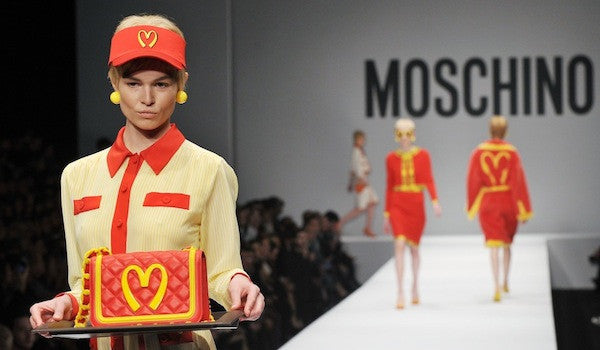
THAT'S A WRAP

Finding beauty in the details of the everyday is perhaps now one of the most clichéd approaches to art and design. But not everyone always thinks about how tropes such as these have actually come into existence – and it’s usually because the claims are true. From the candid park scenes of the impressionists to Andy Warhol's soup cans of the sixties and sweet wrappers of the nineties, everyday materials have long been inspiration to artists and they show no sign of waning any time soon. In fact, food wrappers especially seem only to be growing in their abilities to galvanise artists the world over.

Many of today’s makers can (at least in part) thank Felix Gonzalez-Torres for this, who made candy wrappers more famous than ever in 1991 with his art installation Untitled (Portrait of Ross in LA). Starting with a 175 pounds of individually wrapped candies piled onto a gallery floor, visitors were encouraged to each take a piece as they walked by, and as the mound diminished throughout the exhibition it mirrored the demise of the artist’s late partner during his battle with AIDS before his death. Felix’s deeply personal approach to such flimsy materials turned the art world on its head, reminding people that yes, you can find genuine beauty in today’s disposables.

Textile art is no exception to this, as many artisans continue to work with food wrappers that pass through their hands every day. Be it the high fashion appropriation of McDonald’s branding in Jeremy Scott’s 2014 Moschino designs, the hand-embroidered and appliquéd bubblegum wrappers of Yvonne Beever, or the playful felted condiments of Kate Talbot, makers across all creative industries keep coming back to food for their artistic inspiration. Unsurprisingly, Jeremy’s fast-food fashion was not well received by working class audiences, showing material’s inherent ability to be deeply political no matter what scene it's in.

In a more playful approach, Yvonne’s and Kate’s work each toy with our relationships to branding – be it contemporary or vintage – reminding us that every single object has its origins in craft and design (something that’s easily forgotten in today’s on-the-go culture). Whether it’s a tic-tac, a chewing gum or a box of French fries, craft and design can be found everywhere – it’s just up to the consumers to keep their eyes open.
